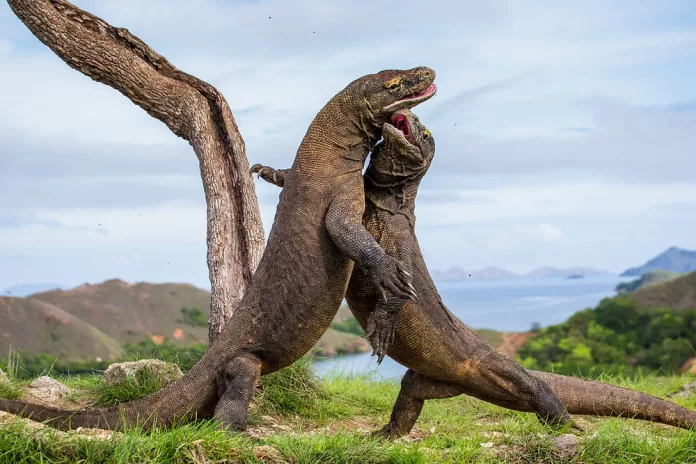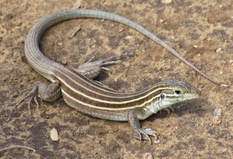In the animal kingdom, reproduction typically involves the mating of male and female, but some remarkable creatures can give birth without the need for a partner. This fascinating phenomenon is known as parthenogenesis, a form of asexual reproduction where a female produces offspring from unfertilized eggs. While the offspring are often one sex—either all male or all female—this method of reproduction can be a survival strategy in challenging environments. Let’s explore eight fascinating animals that can reproduce without mating.
1. Starfish
Starfish, or sea stars, are not just beautiful marine creatures; they also have a unique way of reproducing. While they can reproduce sexually, many species can also engage in asexual reproduction through fission. In this process, a starfish can split itself into two or more pieces, with each piece capable of growing into a complete organism. When a starfish undergoes fission, it can separate along a radial plane, resulting in two separate animals.
This method of reproduction is particularly effective in stable environments, allowing starfish populations to thrive without the need for a mate. In some species, if a single arm breaks off, it can regenerate into a new starfish, further enhancing their ability to reproduce asexually. Starfish are known for their remarkable regenerative abilities. If a starfish loses an arm, it can grow it back, and in some cases, the lost arm can even develop into a new starfish!
2. Sharks
Among the shark family, bonnethead sharks (Sphyrna tiburo) have made headlines for their ability to reproduce through parthenogenesis. This was notably confirmed in 2007 when a female at Omaha’s Henry Doorly Zoo gave birth to a juvenile shark without ever having been in contact with a male. The process of parthenogenesis in bonnethead sharks involves the female producing embryos from her unfertilized eggs.
This method has also been observed in other shark species, such as zebra sharks and blacktip reef sharks. This discovery has opened up new avenues of research into the reproductive strategies of sharks, highlighting their resilience in varying environmental conditions. Bonnethead sharks are known for their unique hammer-shaped heads, which give them an advantage in hunting and navigating their environments.
3. Crocodiles
Crocodiles are often seen as fearsome predators, but they also possess the ability to reproduce without mating. Recent research has confirmed that some species of crocodiles can undergo parthenogenesis, allowing them to develop embryos from unfertilized eggs. This rare form of reproduction suggests that parthenogenesis might be a trait inherited from ancient ancestors, possibly even dinosaurs.
While documented cases are limited, the ability to reproduce asexually offers crocodiles a way to maintain their populations in environments where mates are scarce. Crocodiles are known for their parental care, which is unusual among reptiles. Female crocodiles often guard their nests and help hatchlings into the water, showcasing a remarkable aspect of their behavior.
4. Komodo Dragon
The Komodo dragon (Varanus komodoensis), the largest lizard in the world, is another surprising example of a creature capable of parthenogenesis. In 2006, scientists discovered that a female Komodo dragon at Chester Zoo in the UK laid a clutch of 25 eggs without ever having contact with a male.
This process enables females to produce offspring in environments where males may not be present. The resulting hatchlings are genetically identical to their mother, illustrating a fascinating aspect of reproduction in this iconic species. Komodo dragons are known for their powerful bite and venomous saliva, which helps them subdue prey. They are also highly intelligent and can engage in complex social behaviors.
5. Amazon Molly Fish
READ ALSO: 12 Smartest Animals on Earth
One of the most intriguing examples of parthenogenesis is found in the Amazon molly (Poecilia formosa). These small fish, named after the all-female tribes in Greek mythology, primarily reproduce through a unique form of parthenogenesis known as sperm-dependent parthenogenesis.
Amazon mollies require sperm from males of related species to trigger egg development, but the males do not contribute any genetic material. This means that while males are involved in the process, the resulting offspring are clones of the female parent.
This strategy allows the Amazon molly to thrive in environments where male fish are scarce. Amazon mollies have been observed exhibiting behaviors typically associated with social structures, despite being an all-female species. They showcase a fascinating example of how life can adapt and thrive under unique reproductive strategies.
6. Turquoise Killifish
The Turquoise Killifish is another species that has garnered attention for its asexual reproduction capabilities. In controlled environments, some females have shown the ability to produce offspring without mating, again through parthenogenesis.
This ability allows them to maintain their populations, particularly in ephemeral habitats where environmental conditions can change rapidly. This resilience is crucial for their survival, highlighting the incredible adaptability of life in extreme conditions.
7. Whiptail Lizard
Lastly, the New Mexico Whiptail Lizard is a well-known example of a species that primarily reproduces through parthenogenesis. This all-female species has developed a unique reproductive strategy where females can produce offspring without the need for males.
Interestingly, these lizards still engage in mating behaviors, which may help stimulate egg production, but no genetic material is exchanged. This adaptation allows them to thrive in their habitats, ensuring the continuation of the species in environments where males are scarce.
Conclusion
The ability to reproduce without mating is a remarkable adaptation seen in various species across the animal kingdom. From starfish and sharks to crocodiles and Komodo dragons, these animals showcase the incredible diversity of reproductive strategies that have evolved to ensure survival. Parthenogenesis allows these species to thrive even in challenging conditions, highlighting the resilience of life in the natural world. As we continue to study these fascinating creatures, we gain a deeper appreciation for the complexity and adaptability of life on Earth.








